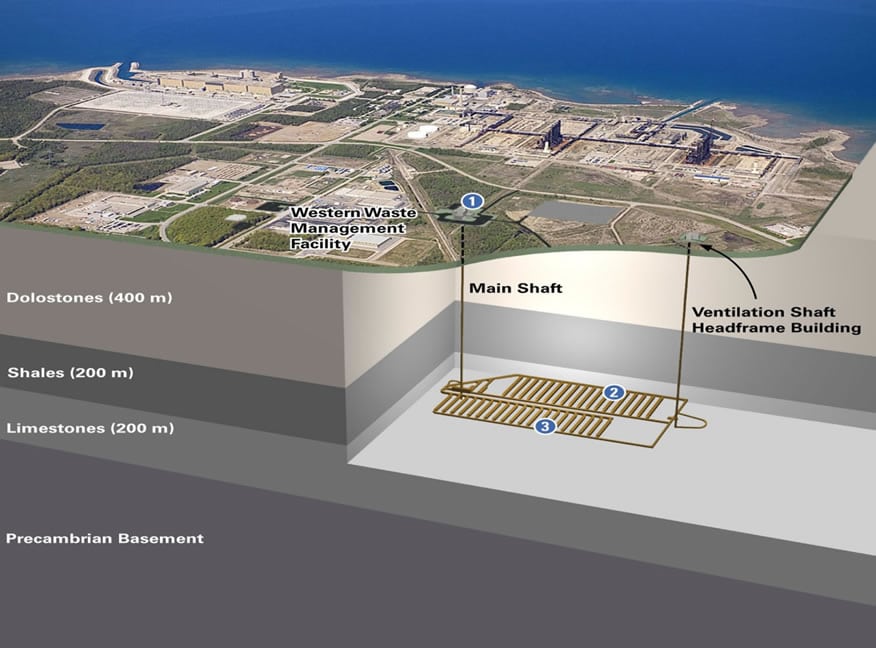OPG: Kincardine Nuclear Waste Deep Geologic Repository Is Best Alternative
Ontario Power Generation (OPG) has submitted documents that suggest its plan to permanently store low-level and intermediate-level nuclear waste close to its Bruce Nuclear Generating Station in Kincardine, at an underground site near the eastern shore of Lake Huron, is the best option for disposal.
Responding to a February 2016 request for information by the federal Ministry of Environment and Climate Change, the company on January 3 submitted a study that compares locations for a deep geologic repository. The alternatives to the proposed Kincardine site include a central Ontario site, which would involve storing the low- and intermediate-level waste in crystalline rock, and a southern Ontario one with sedimentary rock.
Much of OPG’s radioactive waste is stored at the Western Waste Management Facility, a surface facility on the Bruce nuclear site. OPG has proposed building and operating an underground disposal facility for 200,000 cubic meters of waste near the existing waste facility at the Bruce site, about 1.2 kilometers from the shore of Lake Huron. The repository would be constructed in limestone, within the Cobourg Formation, at a depth of about 680 meters underground.

OPG’s study suggests that operations at the proposed Kincardine location could begin within about 10 years at no extra cost. The site has a “willing host community,” and 50% of the company’s nuclear waste has already been shipped there. Only 100,000 cubic meters remain to be shipped from the company’s Pickering and Darlington sites in Ontario.
In comparison, the sedimentary location could cost more than C$2.7 billion, mostly because the company would need to begin a new site selection and licensing process, build new infrastructure, and repack waste stored at the Bruce Nuclear site and ship it to the new location. That site would require 22,000 shipments over 30 years and 300 kilometers (km), OPG said. The crystalline location would be even worse, taking 40 years to build, costing an extra C$3.5 billion, and requiring shipments of nuclear waste over 2,000 km.
A joint review panel comprising members from the Canadian Environmental Assessment Agency and the Canadian Nuclear Safety Commission concluded in May 2015 that OPG’s proposed Kincardine site is the preferred solution for the long-term management of low- and intermediate-level radioactive waste, and that it should be “built now rather than later.”
—Sonal Patel, associate editor (@POWERmagazine, @sonalcpatel)